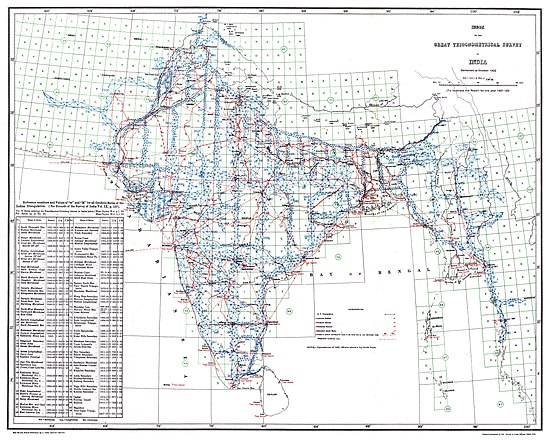1922 index to the Great Trigonometrical Survey, a project that aimed to survey the entire Indian subcontinent with scientific precision. It was begun in 1802 by the British infantry officer William Lambton, under the auspices of the East India Company. Under the leadership of his successor, George Everest, the project was made the responsibility of the Survey of India. Everest was succeeded by Andrew Scott Waugh, and after 1861, the project was led by James Walker, who oversaw its completion in 1871. Among the many accomplishments of the Survey were the demarcation of the British territories in India and the measurement of the heights of Mount Everest, K2, and Kanchenjunga. The Survey had an enormous scientific impact as well, being responsible for one of the first accurate measurements of a section of an arc of longitude, and for measurements of the geodesic anomaly, which led to the development of the theories of isostasy. The native surveyors employed in the Himalayas, especially in Tibet (where Europeans were not allowed), were called pundits, and included cousins Nain Singh Rawat and Krishna Singh Rawat.Image: Survey of India
